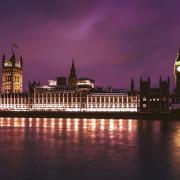
Some of you that are reading this will see Easter as a time to eat chocolate and to have a couple of days off of work, or two whole weeks off school if you are lucky. The celebration of Easter is over the course of three days according to the Bible, it says that Christ died on the cross on Good Friday and came back to life three days later on Easter Monday. Easter celebrates the resurrection of Jesus Christ but the dates for this celebration changes each year and it varies between 21 March and 25 April as it depends on when there is a full moon in Spring. Around the globe there is an estimated 2 billion people who celebrate Easter for religious reasons.
What is so special about the Easter bunny you may ask.
The story of the Easter bunny is a relatively new concept, it is thought to have become common in the 19th Century, the rabbit was chosen because it gives birth in Spring, which is around the same time as Easter. The rabbit is a symbol of new life and people thought that they laid eggs, then decorated them and hid them for people to find and that is where an Easter egg hunt originates from. In actual fact chickens lay eggs and not rabbits but will you be the one to spoil the legend that young children believe in? The Easter bunny is not the only animal to help at Easter, most countries have their own interpretation on the animal that gives out the eggs, in Australia the eggs are delivered by a bilby, in Switzerland they are delivered by a hare and in France the ringing of the church bells brings the chocolate to all those celebrating Easter.
Is it just another commercial endorsement and a chance to eat more chocolate?
Many of us may like to eat chocolate eggs but initially eating eggs was not allowed by the church in the course of the week leading up to Easter which is also known as the Holy week. Any eggs that were laid were saved specially to decorate them and then given to children as gifts these eggs were known as Holy week eggs. When chocolate hollow eggs were made they were used to mirror Jesus’ empty tomb and how he was resurrected. The first chocolate eggs were made in 1875 by Cadbury, they were made with dark chocolate and they had a smooth plain surface, filled with sugar coated chocolate drops also known as ‘Dragees.’ The most popular chocolate egg is Cadbury’s creme and was first made in 1971. In 1885 Peter Carl Fabergé designed for the Russian Tasr, Alexander the third a special Easter egg for his wife Empress Maria.
Throughout the centuries the celebration has been adapted, an example of this is the Victorian era when they started to give out satin covered cardboard eggs filled with Easter gifts. Chocolate is not the only snack that is traditionally eaten around Easter, hot cross buns and jelly beans are enjoyed at this time too. The cross on top of the buns symbolises the crucifixion of Christ and the spices inside remind Christians of the spices put on his body, so next time you want to eat a traditional snack at Easter remember what it truly means.
Easter is the second biggest candy holiday after Halloween which means it is a time for big companies such as Cadburys and Galaxy to make some additional money due to every child receiving an average of 8.8 eggs (in the UK) which is double the recommended amount by dietitians. These globalised companies are definitely making a lot of profit at Easter with an average household spending £75 on Easter treats but are you getting your money’s worth? Approximately 80 million chocolate eggs were sold in the uk.
On Sunday 1st April 2018 will you be celebrating Easter or just enjoying the long weekend off?
Written by Katie Trebes, The Sydney Russell School



























